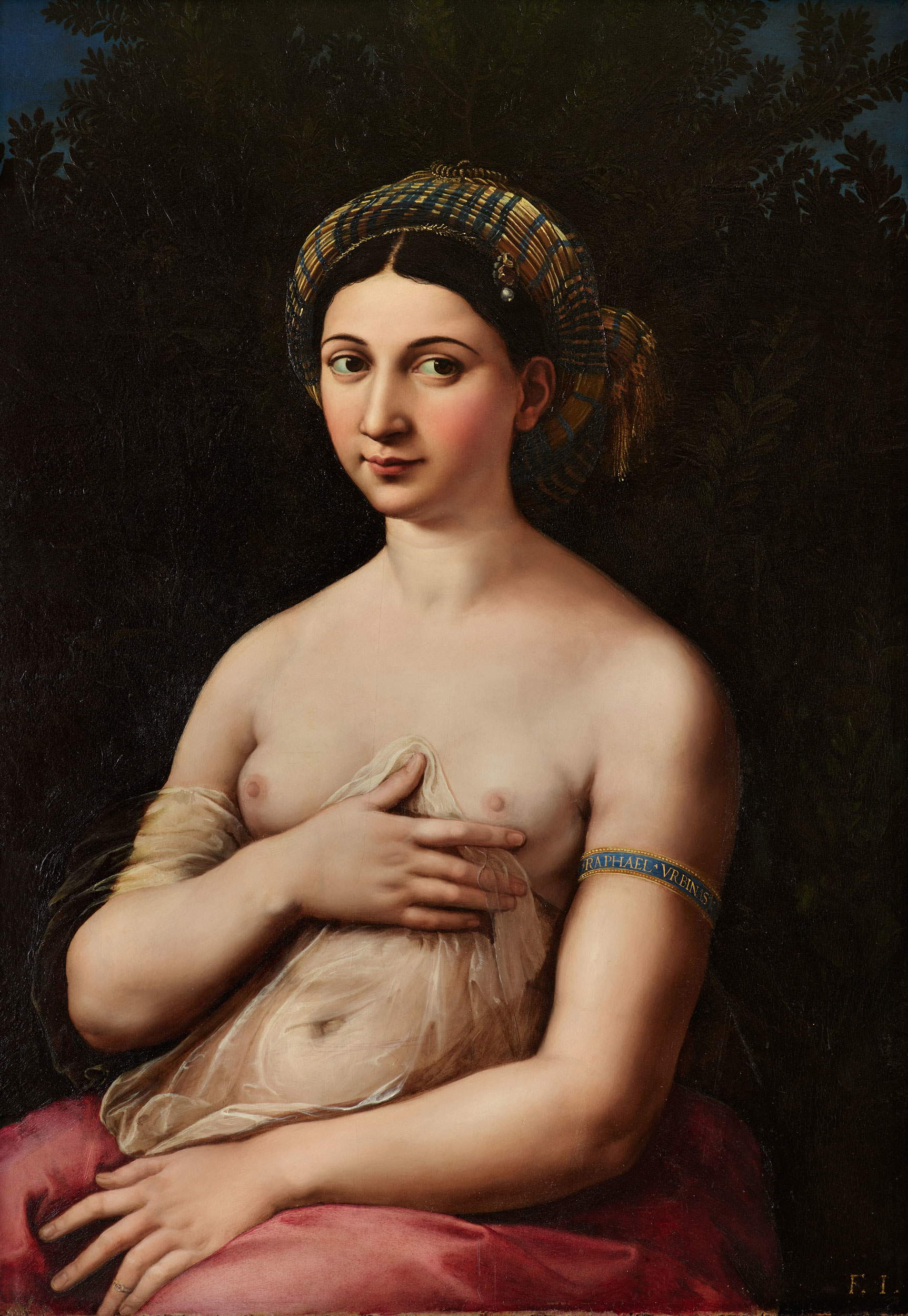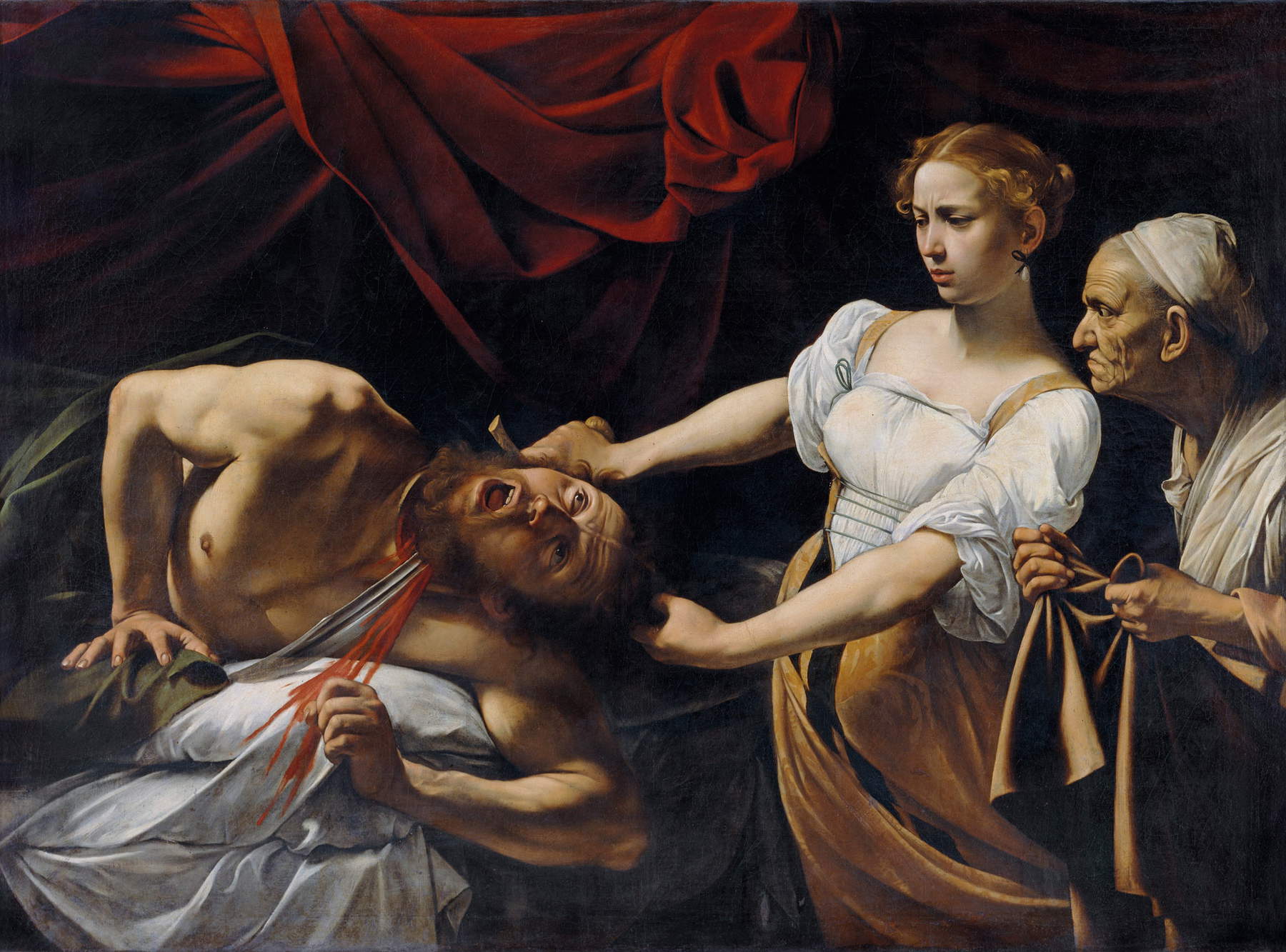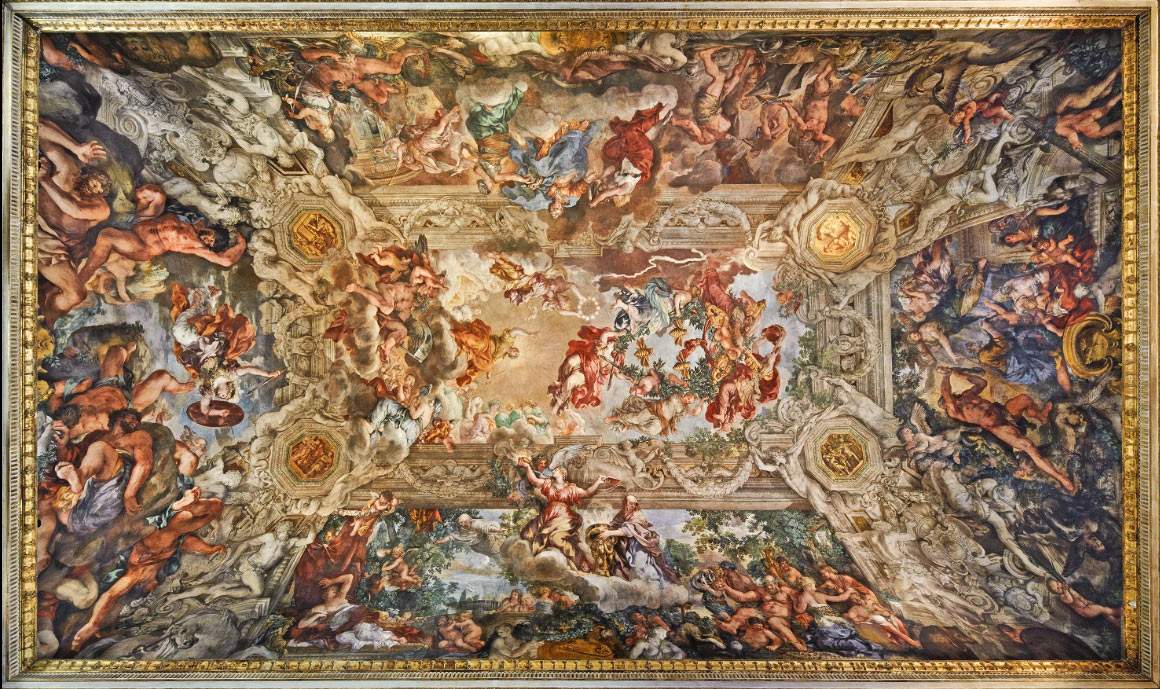An agile volume to learn about the main masterpieces of the Barberini Corsini National Galleries in Rome. The wonders of Palazzo Barberini and Galleria Cors ini are offered to readers and the curious in the book Palazzo Barberini Galleria Corsini. 100 Masterpieces, published by Officina Libraria (232 pages, 18.90 euros, ISBN 978-88-3367-052-2) and edited by art historian Yuri Primarosa, head of education at the Barberini Corsini Galleries as well as a scholar of seventeenth-century art (he was responsible for curating the Corsini Gallery’s monographic exhibition on Plautilla Bricci).
The book, published in a double edition (in Italian and English), is the first guide on the main masterpieces of the two galleries and aims to offer itself to the public and visitors of the two museums, since 2015 united under a single institutional entity following the museum reform, as an anthology of the museum’s heritage, popular in nature but based on a rigorous scientific project, combining professional care of content with clarity of exposition. Primarosa was assisted in his work of selecting and designing the content by the entire staff of art historians of the Roman museums, consisting of Cinzia Ammannato, Tullia Carratù, Maurizia Cicconi, Alessandro Cosma, Andrea G. De Marchi, Michele Di Monte and Paola Nicita. It is preceded by an essay by Flaminia Gennari Santori, director of the National Galleries of Ancient Art, in which the development of the two museums, which bear the names of the two papal families who have long been protagonists in the political and cultural affairs of Rome, is outlined in broad strokes.
“The Barberini Corsini National Galleries,” Gennari Santori explains in his introduction, “are [...] an extraordinary and in their own way unique museum of context, whose importance lies not only in the undeniable masterpieces preserved in it but also in the web of works and personalities that the collection brings to light. Walking through the halls (and storerooms) of the Galleries, one delves into the development of the arts in Rome between the 1600s and the late 1700s: the disruptive naturalistic revolution triggered by Caravaggio’s works and the countless extraordinary interpretations of them by his Italian and foreign followers; the classicism of the Bolognese painters; the beginnings and explosion of Baroque painting in Pietro da Cortona’s frescoes in Palazzo Barberini; the classicism of the second half of the 17th century, the international environment of the grand tour, and the dawn of neoclassicism.” The idea of the volume, Gennari Santori points out in the conclusion of his introduction, is to provide the public with a synthesis of the visions of the founders of the two collections, considered from an expanded perspective: not only therefore the Barberini family on the one hand and on the other Cardinal Neri Corsini, responsible for the current arrangement of the gallery at the Lungara and a fine collector, but also Adolfo Venturi, who curated in 1895 the first arrangement of the Galleria Nazionale d’Arte Antica in Palazzo Barberini and to whom we owe the idea of making it a national patrimony, Federico Hermanin who directed the gallery in the early years of the 20th century, expanding it with acquisitions (above all that of the Narcissus), and finally Henrietta Hertz, author of a significant donation to the gallery.






Palazzo Barberini Galleria Corsini. 100 Masterpieces also includes two short essays on the two palaces (as well as on the most relevant architectural elements such as Borromini’s Spiral Staircase), as well as a couple of focuses on the two main frescoes found in Palazzo Barberini, Andrea Sacchi’s Allegory of DivineWisdom and Pietro da Cortona’s celebrated Allegory of Divine Providence. In the pages of the book, the masterpieces of Palazzo Barberini and Palazzo Corsini stand side by side, with no divisions between the two institutions, but with an iteration that develops chronologically, starting with the Corsini Throne, a splendid late-Republican (circa 40 B.C.) copy of an Etruscan throne from the late fifth century B.C, preserved in the Corsini Gallery, and coming up to work number 100, a masterpiece of neoclassical sculpture, the Dancer by the Carrarese sculptor Luigi Bienaimé of about 1830, also kept among the rooms of the Corsini Palace, a copy of a Canovian sculpture that was a great success at the time of its creation.
The approach with which the entries were compiled is typical of a catalog: double-page spreads with information about the work on one side and a full-page image on the other. The individual descriptions, well edited and clear, are accompanied not only by technical data (measurements, techniques, media, dimensions, inventory, provenance) but also by up-to-date bibliographies. The images arranged to accompany the descriptions are those resulting from the photographic campaign undertaken by the Bibliotheca Hertziana of Rome, carried out largely in the context of the many restorations that have affected the works in Palazzo Barberini and Palazzo Corsini in recent years, with the result that, thanks to the quality of the reproductions, even the most minute details can be read well.
In between, an extraordinary parade of masterpieces: for Palazzo Barberini, such celebrated works as Raphael’s unfailing Fornarina and Caravaggio’s Saint Francis in Meditation and Judith Beheading Holofernes have been selected (in addition to the Narcissus, which in the book is given dubiously to Caravaggio, with a question mark: the sheet briefly gives an account of the attributional debate surrounding the work and specifies that Spadarino’s name is however, the one that has garnered the greatest consensus among scholars), or even Hans Holbein the Younger’s Portrait of Henry VIII, Guercino’sEt in Arcadia ego and Guido Reni’s Penitent Magdalene, even works that are less famous but are among the museum’s gems (e.g., Giovanni Baronzio’s Stories from the Passion of Christ, Domenico Beccafumi’s Madonna and Child with St. John, Jacopo Zucchi’s Bathsheba at the Bath ). Significant weight has been given to works documenting the development of the arts in Rome from the 15th century onward: so here we see Antoniazzo Romano with his Madonna and Child with Saints Paul and Francis, works by the followers of Raphael and Michelangelo, from Giulio Romano to Perin del Vaga, from Daniele da Volterra to Girolamo Genga, and then the masterpieces of the Caravaggesque and classicists of the 17th century, up to the 18th century of Batoni, Mengs, Hubert Robert, and Hackert.
The Corsini Gallery selection, on the other hand, is smaller (in the overall economy of the book, two-thirds of the selection is devoted to Palazzo Barberini), but these are works of supreme importance, largely concentrated between the seventeenth and eighteenth centuries, but masterpieces from earlier periods are not neglected: therefore, there could be no lack of tabs reserved for Giovanni da Milano’s Stories of the Passion of Christ, Beato Angelico’s marvelous triptych, Fra’ Bartolomeo’s Holy Family with St. John, and Jacopo Bassano’sAdoration of the Shepherds. Next comes the florilegium of great works of the 17th and 18th centuries, which opens with Caravaggio’s St. John the Baptist in the Desert and touches its peaks with Orazio Gentileschi (the Madonna and Child, Giovanni Lanfranco ( St. Agatha Rescued in Prison by St. Peter), Pieter Paul Rubens(Saint Sebastian being cared for by angels), Antoon van Dyck (the Madonna of the Straw), Gian Lorenzo Bernini (the Bust of Pope Alexander VII Chigi), without neglecting Vouet, Poussin, Ribera, Giordano, Berentz’s still lifes, and Rosalba Carriera’s allegories.
Despite the quality of the book, which is printed on fine ecological paper, with cellulose from responsibly managed forests, and has an elegant graphic design, the price, the Barberini Corsini Galleries explain, has been deliberately kept low to encourage public access to quality dissemination. An anthology and guide to the main works of the two galleries, Palazzo Barberini Galleria Corsini. 100 Masterpieces stands as one of the most interesting publishing initiatives from the museum world this year.
 |
| Book featuring the 100 masterpieces of Palazzo Barberini and Galleria Corsini is released |
Warning: the translation into English of the original Italian article was created using automatic tools. We undertake to review all articles, but we do not guarantee the total absence of inaccuracies in the translation due to the program. You can find the original by clicking on the ITA button. If you find any mistake,please contact us.